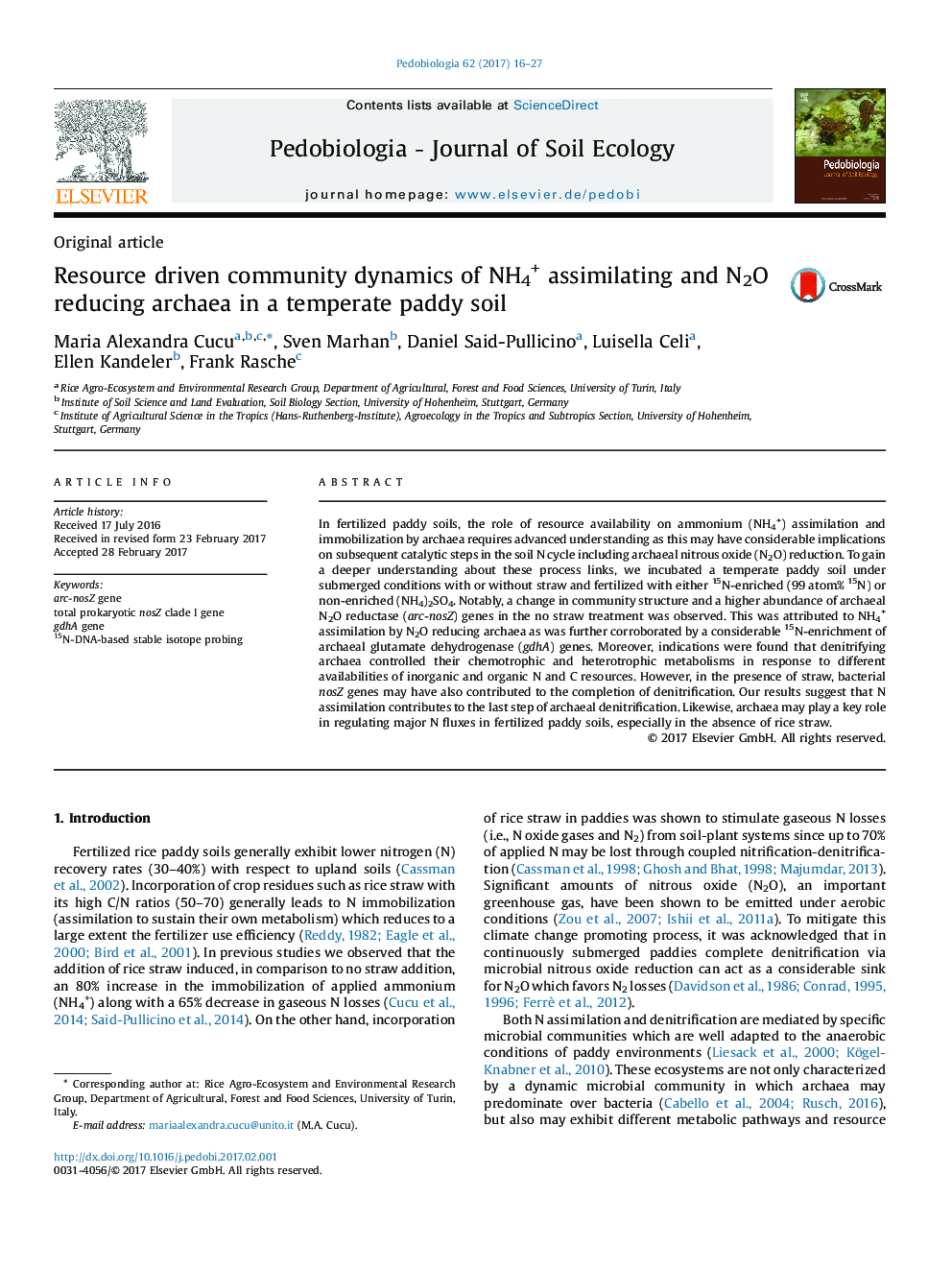| Article ID | Journal | Published Year | Pages | File Type |
|---|---|---|---|---|
| 5518750 | Pedobiologia | 2017 | 12 Pages |
â¢15N-DNA based Stable Isotope Probing analyses revealed the archaeal N assimilation within the arc-nosZ gene.â¢Archaeal N assimilation and immobilization occurred in both thesis, with and without straw addition.â¢Labile C was an indicator of increased abundance of denitrifying bacteria.â¢A significant role of archaea in N2O reduction was linked to their metabolic resilience.â¢A conceptual model of archaeal N assimilation and denitrification was proposed.
In fertilized paddy soils, the role of resource availability on ammonium (NH4+) assimilation and immobilization by archaea requires advanced understanding as this may have considerable implications on subsequent catalytic steps in the soil N cycle including archaeal nitrous oxide (N2O) reduction. To gain a deeper understanding about these process links, we incubated a temperate paddy soil under submerged conditions with or without straw and fertilized with either 15N-enriched (99 atom% 15N) or non-enriched (NH4)2SO4. Notably, a change in community structure and a higher abundance of archaeal N2O reductase (arc-nosZ) genes in the no straw treatment was observed. This was attributed to NH4+ assimilation by N2O reducing archaea as was further corroborated by a considerable 15N-enrichment of archaeal glutamate dehydrogenase (gdhA) genes. Moreover, indications were found that denitrifying archaea controlled their chemotrophic and heterotrophic metabolisms in response to different availabilities of inorganic and organic N and C resources. However, in the presence of straw, bacterial nosZ genes may have also contributed to the completion of denitrification. Our results suggest that N assimilation contributes to the last step of archaeal denitrification. Likewise, archaea may play a key role in regulating major N fluxes in fertilized paddy soils, especially in the absence of rice straw.
Graphical abstractDownload high-res image (111KB)Download full-size image
